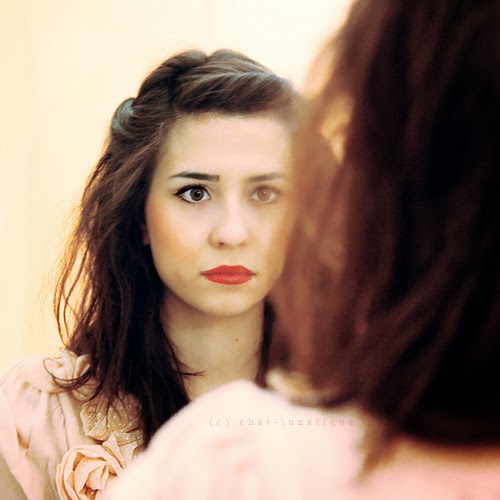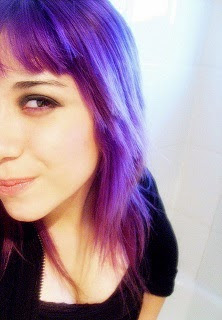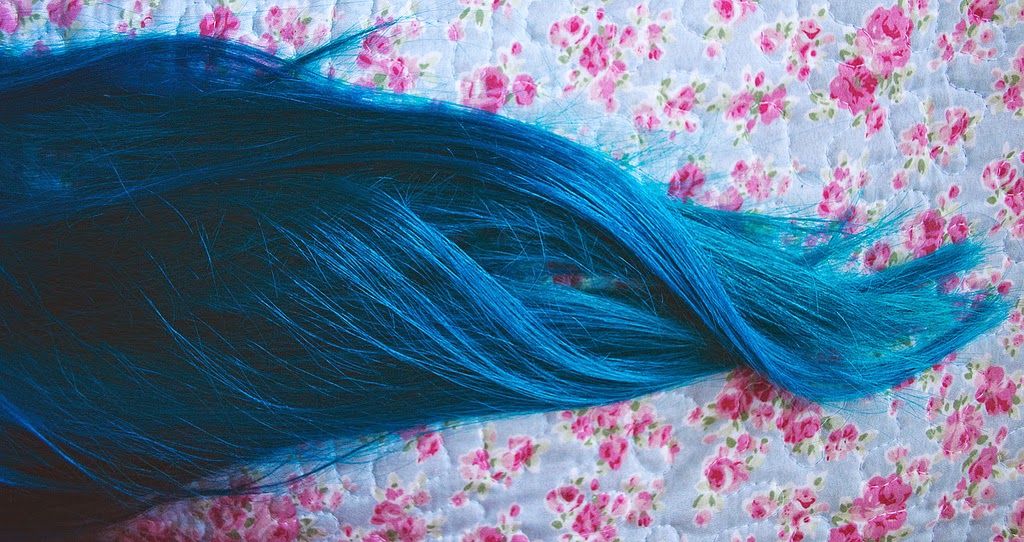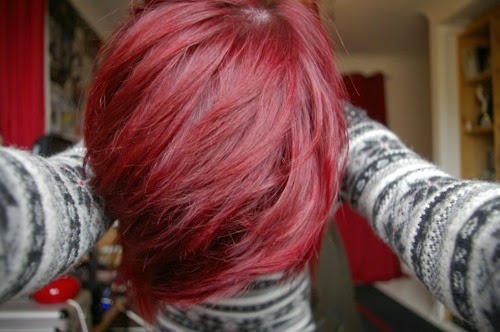
|
| [1] |
Unwanted hair colour
An unwanted hair colour can be removed in a few different ways depending on how much dye you need to remove and the type of dye that was used to achieve the colour. The different removal methods available to you include:
- Clarifying shampoo
- Hair dye remover
- Bleach wash
- Bleach
Clarifying shampoo
All shampoos will cause hair dye to fade over time as they wash it out of the hair, but clarifying shampoo is particularly adept at this because it is designed to remove product build-up.
If you've ended up with a colour that is slightly too dark or vibrant, clarifying shampoo is the best option to gradually lighten the colour after a few washes without damaging your hair and requiring only minimal effort and time. Used in place of your regular shampoo it will soften dark hair colour every time you wash your hair.
However, more dramatic removals require a more intense treatment, and clarifying shampoo isn't up to this task.
Uses: Softening dark hair colour, over-toned hair, or overly vibrant colour results gradually without damage.
Cons: Can only soften dye. Can't remove significant amounts of colour and needs to be used over time.
Hair dye remover
Hair dye remover is a great way to get rid of hair dye for several reasons. Firstly, it doesn't cause any damage to your hair. More importantly though, the mechanism behind why it works means that it actually reverses the chemical process that makes permanent hair dye permanent.
When you apply permanent hair dye, it is first a white to beige colour because it exists in the form of colourless molecules called intermediates. These molecules are small enough to penetrate into the deeper part of the hair called the cortex.
When combined with peroxide however, the oxidation from the peroxide creates chemical bonds which result in larger molecules. Not only are these molecules unable to readily wash back out of the hair, but they are also now coloured and cause the hair to look the new colour of the dye that was used.

|
| Vanish Hair Dye Remover |
Hair dye remover breaks these bonds back down and reverts dye back down into intermediates, allowing them to simply be washed out of the hair. It does this without damaging the hair and is relatively effective as long as there isn't too much colour buildup. Even when there is a buildup it's often a good first treatment to make it easier for more intensive treatments to work afterwards.
Uses: Removing permanent dye without damage.
Cons: Less effective when dye buildup is present. Only effective on oxidative dye - will not work on semi-permanent or demi-permanent dye. Demis that use a developer can be partially removed in some cases.

How to use hair dye remover
Hair dye remover consists of two separate solutions. These solutions need to be mixed together in equal concentration, at which point a chemical reaction begins to occur.
It is this reaction that will break down the dye in your hair and the product needs to be applied quickly and evenly for the best results as it will begin to lose effectiveness over time as the reaction proceeds. Any unused product can't be reused after mixing.
Once applied, leave the product for up to 20 minutes before rinsing it out with water and then shampooing it several times. All broken down dye must be shampooed out or else it can oxidise again and darken back up if it is still in your hair. After shampooing, deep condition to take care of any dryness that the hair dye remover and shampoo caused. You can repeat the dye remover up to three times if necessary to remove enough colour.
If you're applying a new colour directly over the removed colour after using dye remover, you will need to use a shade that is 2 levels lighter than your actual desired result as it can end up darker than. You will also likely need to use a colour that is cooler than your desired shade in most cases as lightening your hair, regardless of whether it is done with bleach or dye remover, will reveal warm tones.
Bleach washing

|
| [2] |
What this does is creates a bleach formula that is more geared towards gently removing unwanted colour, and less able to significantly lighten hair. If you need to remove 1 - 2 levels worth of unwanted colour, you can use a bleach wash for this. If you need more lightening than this though, your best option is to apply a full bleach.
Like with dye remover, you will also need to use a cool tone to counteract the warmth that is revealed during lightening. If you don't do this, the colour you applied will end up to warm.
Uses: Correcting over-toned, too dark, or overly vibrant hair colour. Lightening 1 - 2 levels.
Cons: Can't significantly lighten hair. Is only mildly damaging, but still causes damage compared to dye remover or shampooing.
Bleach washing - A full how to if you need more information, detailing how to prepare, apply, and process bleach in this way and get rid of hair dye.
Bleaching
Bleaching is the most intensive way to get rid of hair dye. It can remove significant amounts of colour compared to any other method but is also more damaging so should be used sparingly and only if other methods are not appropriate or don't work effectively enough.

|
| Wella Blondor Multi Blonde Bleach |
To begin applying the product, your hair should be sectioned into four quadrants, achieved by parting down the middle and again in the opposite direction. Apply bleach in a downward direction from the top layer of each section to the bottom until every quadrant is covered methodically.

Like with hair dye remover, you will also need to use a cooler shade of dye than desired to produce the actual shade you want due to the warmth that is revealed during lightening. Use of an ash dye is always a good choice for this, rinsing after the tone reaches the desired tone.
Uses: Removing large amounts of colour, and lightening hair.
Cons: Damaging, drying, and requires more after-care to restore the hair to good condition after use. Not an option for very damaged hair that can't stand up to the process.
Bleaching hair - A full tutorial detailing the bleach process including choice of developer, mixing ratio and preparation, application, and rinsing. Whilst this tutorial is aimed at dyeing hair blonde, the bleaching instructions are applicable for any intended result.

|
| [3] |
After removal care and repair

|
|
Redken Smooth Lock Leave-in Conditioner |
Shampoo and dye remover are gentle and non-damaging ways to get rid of hair dye, but they can cause dryness. The easiest way to counteract this is to simply use a conditioning rinse or good deep conditioner after using either of these methods.
If this isn't enough however, which is possible if you normally suffer from dry hair, you can also use a quality leave-in conditioner to alleviate dryness after washing. This will also keep your hair hydrated during dry air conditions, low humidity, and after styling.
 Any form of bleaching on the other hand, is at least mildly damaging to your hair as well as drying. If you use these methods, the best way to correct any damage that occurs is to use a protein treatment. Conditioners relieve dryness and will help with that issue after bleaching, but only a protein treatment can actually repair your hair and get it back to a healthy condition if it suffers damage.
Any form of bleaching on the other hand, is at least mildly damaging to your hair as well as drying. If you use these methods, the best way to correct any damage that occurs is to use a protein treatment. Conditioners relieve dryness and will help with that issue after bleaching, but only a protein treatment can actually repair your hair and get it back to a healthy condition if it suffers damage.Have a question about how to get rid of hair dye? Having trouble removing stubborn colour? Leave a comment for tailored advice.

No comments:
Post a Comment